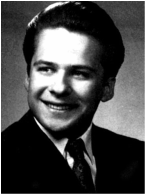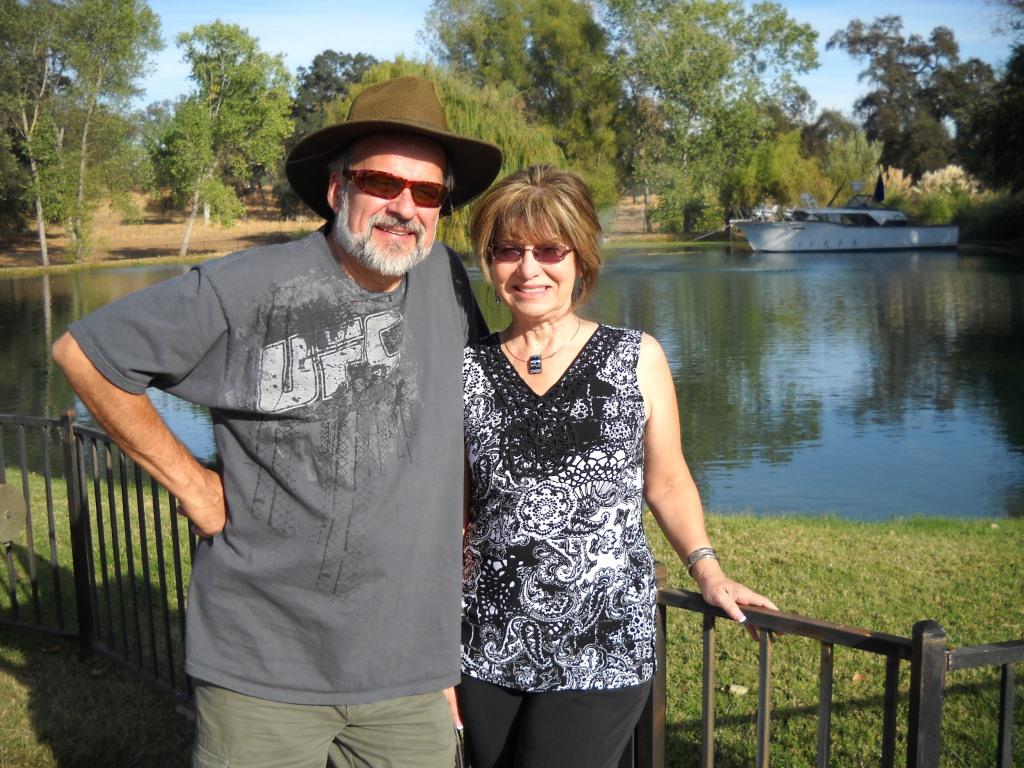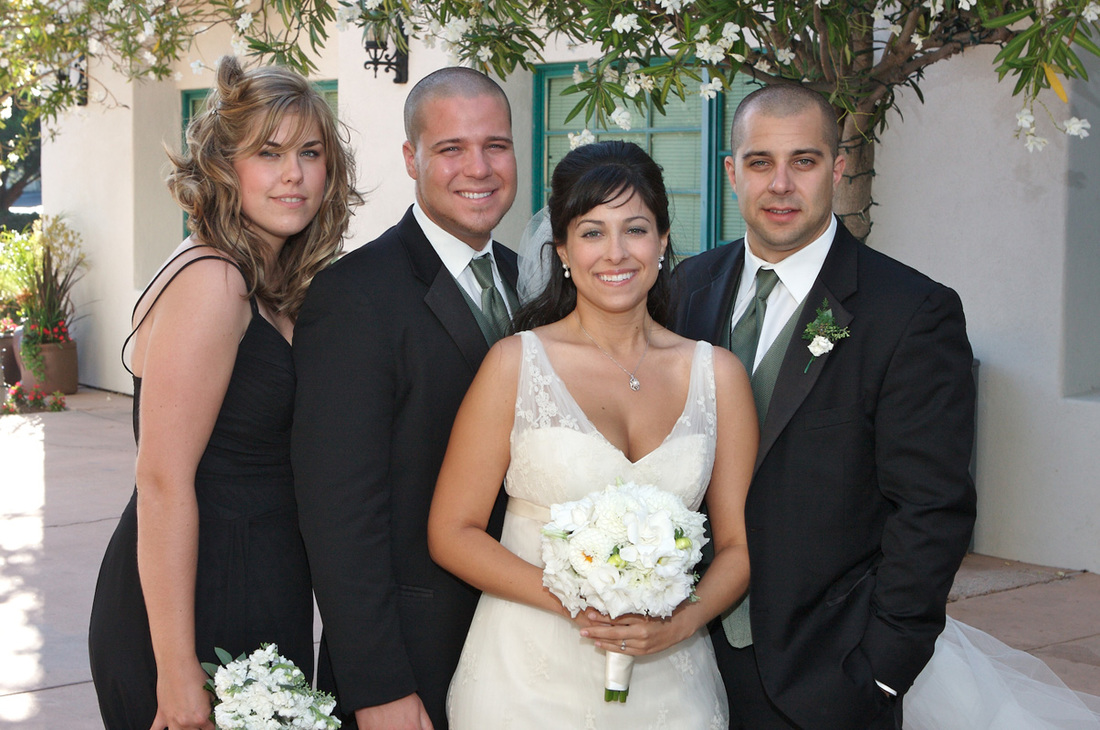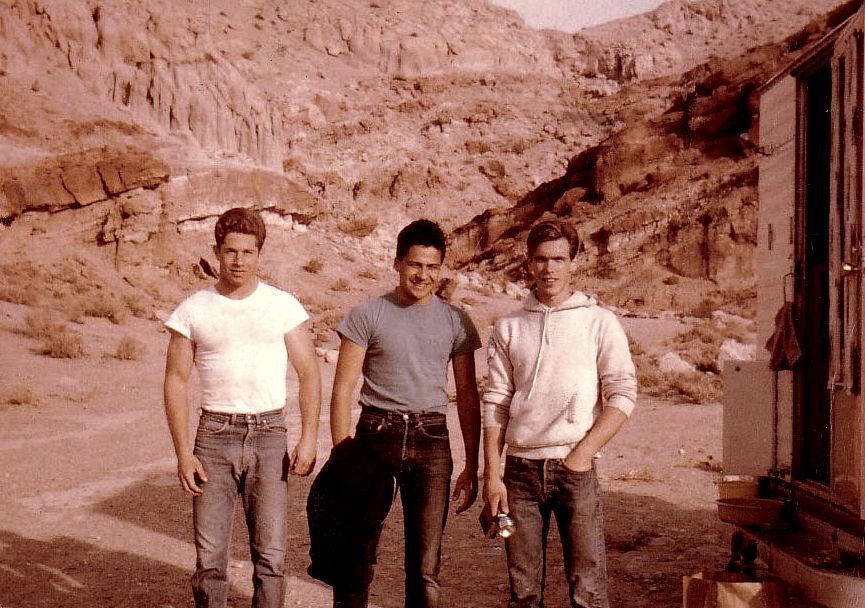Chuck Real
 1965
1965
After graduating, I began the fall semester at CSUN (San Fernando Valley State College back then), majoring in Geological Sciences. The department was small, the instruction was great, and I was very fortunate to have found a major I loved that would later become my career. After graduating with academic honors, I continued on to grad school in the Department of Geological Sciences at USC, focusing on geophysics and seismology. At that time, I met Debbie Ebersole, from a later class of Cleveland High and love of my life, and we’ve been happily married for the past 45 years. When the 1971 San Fernando Earthquake struck, it provided plenty of material for a Master’s Thesis, which ended up being published in a scientific journal. While in college, I joined a rock band for occasional relief from academics, and even returned to Cleveland High to play at a dance.
Following grad school I was offered a Presidential Internship by the U.S. Geological Survey, which I turned down to take on a permanent job with Exxon as an exploration geophysicist in Denver, Colorado, searching for oil in the Rocky Mountains, North Slope of Alaska, and offshore California. More interested in the earthquake problem, however, I left after two years to join the California Geological Survey, where I finished a 40-year career in the earthquake hazards in 2013. While there, I headed up an international research project with scientists and engineers in 15 countries to test state-of-the-art methods for predicting the severity of earthquake shaking for engineering design purposes….a great experience that included foreign travel. Following the 1989 Loma Prieta Earthquake, collaboration with staff of Assembly Speaker Willie Brown of the California Legislature led to the Seismic Hazards Mapping Act, which created a large hazard mapping program that I managed for the latter half of my career. Yes, I’ll take blame for those Seismic Hazard Zones that you may have seen on the news or encountered during real estate disclosure, but they really have improved the way California develops regarding earthquake safety. The program success helped me receive the 2013 Lifetime Achievement Award from the Western States Seismic Policy Council. Diversity in my job allowed me to become a member of the DANTE Science Team at JPL, a proposed thermal earth-imaging satellite. It never launched as funding went to another competing mission, but it was a good experience. After many grant projects involving NASA, USGS, and others, I spent my final two years co-chairing a multi-disciplinary high-level committee preparing recommendations to improve California’s coastal communities’ preparedness for tsunami hazards.
Debbie and I raised a family of four in Orangevale, a suburb 22 miles east of Sacramento near Folsom. Right to left in picture: Ryan (a fireman and medic for the City of Sacramento), Vanessa (a contracts auditor for the Department of Defense in San Diego), Gavin, (an investigation analyst for California Department of Social Services Foster Care Unit), and Robyn, (a nurse for Sutter General Hospital in Sacramento). Since retiring in 2013 life hasn’t slowed down as we were forewarned. Home improvement projects, travel, and grandchildren (2-year old Charlotte in San Diego and 1-year old Lucca in Sacramento) have kept us busy far beyond our expectations. Amidst these activities, I’ve managed to keep one foot in science, completing a 2-year stint on the Board of Directors of the Earthquake Engineering Research Institute in Oakland, testifying at a committee hearing of National Academy of Science in Washington D.C., and am currently on the Board of the Sacramento Valley Astronomical Society….happily returning to a childhood hobby.
Reflecting back, life has been good: A high school and college education that allowed me to successfully pursue a lifetime career in earth science, and a wonderful wife and family. I had an opportunity to thank the Los Angeles City School District after completing a pro bono project ranking exposure of 1300 school facilities to earthquake hazard. When asked “how much should we pay you?” my reply was simple, “you already have.” As most of us have gone our separate ways since graduation, I’m looking forward to hopefully seeing old friends like Bruce Wiley who taught me how to scuba dive and Chris Vargas, who helped spark my interest in astronomy, and others I’ve known since elementary school but haven’t seen for many years like Ed Court. The reunion will be lots of fun.
Following grad school I was offered a Presidential Internship by the U.S. Geological Survey, which I turned down to take on a permanent job with Exxon as an exploration geophysicist in Denver, Colorado, searching for oil in the Rocky Mountains, North Slope of Alaska, and offshore California. More interested in the earthquake problem, however, I left after two years to join the California Geological Survey, where I finished a 40-year career in the earthquake hazards in 2013. While there, I headed up an international research project with scientists and engineers in 15 countries to test state-of-the-art methods for predicting the severity of earthquake shaking for engineering design purposes….a great experience that included foreign travel. Following the 1989 Loma Prieta Earthquake, collaboration with staff of Assembly Speaker Willie Brown of the California Legislature led to the Seismic Hazards Mapping Act, which created a large hazard mapping program that I managed for the latter half of my career. Yes, I’ll take blame for those Seismic Hazard Zones that you may have seen on the news or encountered during real estate disclosure, but they really have improved the way California develops regarding earthquake safety. The program success helped me receive the 2013 Lifetime Achievement Award from the Western States Seismic Policy Council. Diversity in my job allowed me to become a member of the DANTE Science Team at JPL, a proposed thermal earth-imaging satellite. It never launched as funding went to another competing mission, but it was a good experience. After many grant projects involving NASA, USGS, and others, I spent my final two years co-chairing a multi-disciplinary high-level committee preparing recommendations to improve California’s coastal communities’ preparedness for tsunami hazards.
Debbie and I raised a family of four in Orangevale, a suburb 22 miles east of Sacramento near Folsom. Right to left in picture: Ryan (a fireman and medic for the City of Sacramento), Vanessa (a contracts auditor for the Department of Defense in San Diego), Gavin, (an investigation analyst for California Department of Social Services Foster Care Unit), and Robyn, (a nurse for Sutter General Hospital in Sacramento). Since retiring in 2013 life hasn’t slowed down as we were forewarned. Home improvement projects, travel, and grandchildren (2-year old Charlotte in San Diego and 1-year old Lucca in Sacramento) have kept us busy far beyond our expectations. Amidst these activities, I’ve managed to keep one foot in science, completing a 2-year stint on the Board of Directors of the Earthquake Engineering Research Institute in Oakland, testifying at a committee hearing of National Academy of Science in Washington D.C., and am currently on the Board of the Sacramento Valley Astronomical Society….happily returning to a childhood hobby.
Reflecting back, life has been good: A high school and college education that allowed me to successfully pursue a lifetime career in earth science, and a wonderful wife and family. I had an opportunity to thank the Los Angeles City School District after completing a pro bono project ranking exposure of 1300 school facilities to earthquake hazard. When asked “how much should we pay you?” my reply was simple, “you already have.” As most of us have gone our separate ways since graduation, I’m looking forward to hopefully seeing old friends like Bruce Wiley who taught me how to scuba dive and Chris Vargas, who helped spark my interest in astronomy, and others I’ve known since elementary school but haven’t seen for many years like Ed Court. The reunion will be lots of fun.
Click on photos to enlarge



